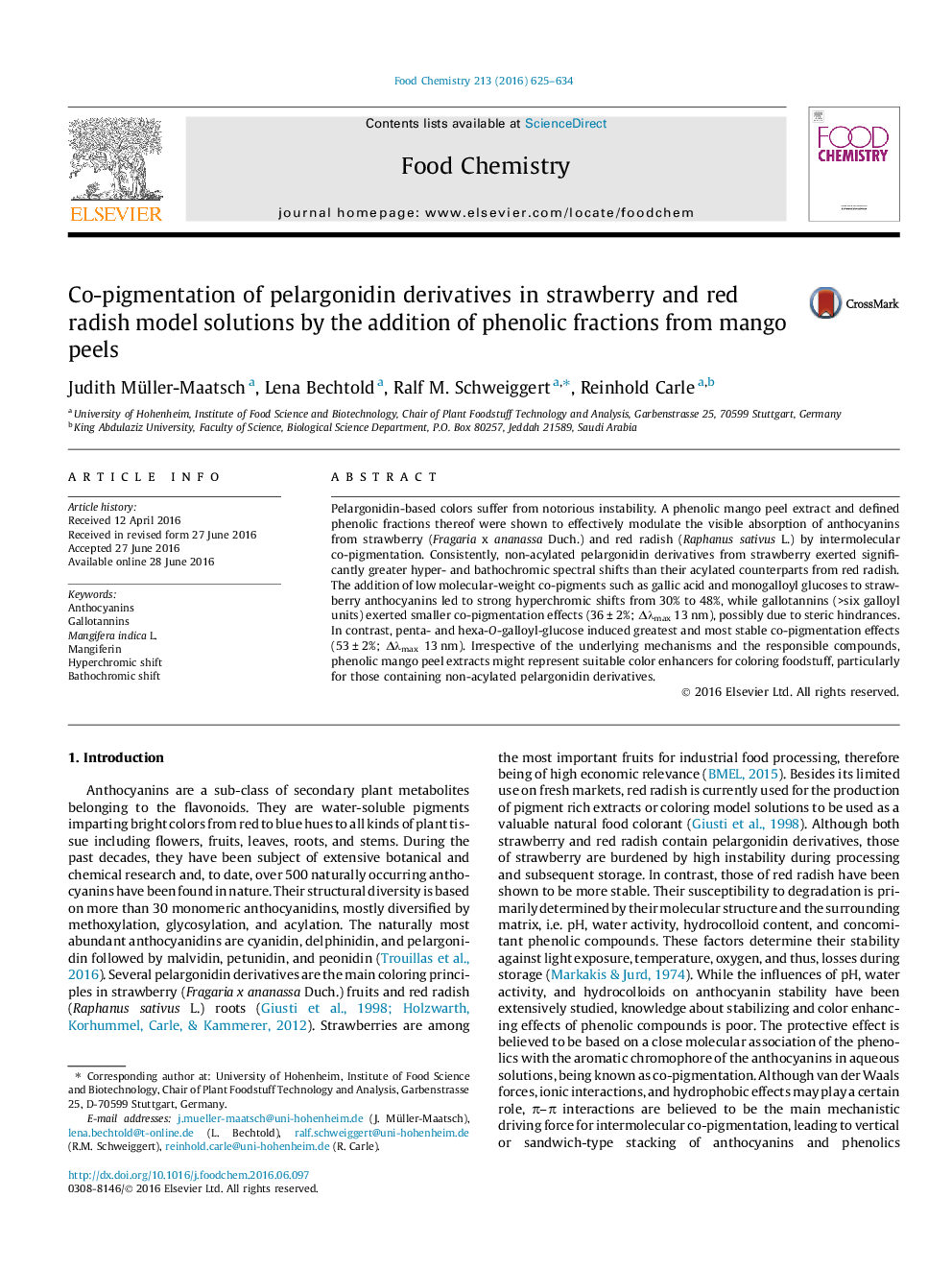| Article ID | Journal | Published Year | Pages | File Type |
|---|---|---|---|---|
| 7587652 | Food Chemistry | 2016 | 10 Pages |
Abstract
Pelargonidin-based colors suffer from notorious instability. A phenolic mango peel extract and defined phenolic fractions thereof were shown to effectively modulate the visible absorption of anthocyanins from strawberry (Fragaria x ananassa Duch.) and red radish (Raphanus sativus L.) by intermolecular co-pigmentation. Consistently, non-acylated pelargonidin derivatives from strawberry exerted significantly greater hyper- and bathochromic spectral shifts than their acylated counterparts from red radish. The addition of low molecular-weight co-pigments such as gallic acid and monogalloyl glucoses to strawberry anthocyanins led to strong hyperchromic shifts from 30% to 48%, while gallotannins (>six galloyl units) exerted smaller co-pigmentation effects (36 ± 2%; Îλmax 13 nm), possibly due to steric hindrances. In contrast, penta- and hexa-O-galloyl-glucose induced greatest and most stable co-pigmentation effects (53 ± 2%; Îλmax 13 nm). Irrespective of the underlying mechanisms and the responsible compounds, phenolic mango peel extracts might represent suitable color enhancers for coloring foodstuff, particularly for those containing non-acylated pelargonidin derivatives.
Related Topics
Physical Sciences and Engineering
Chemistry
Analytical Chemistry
Authors
Judith Müller-Maatsch, Lena Bechtold, Ralf M. Schweiggert, Reinhold Carle,
